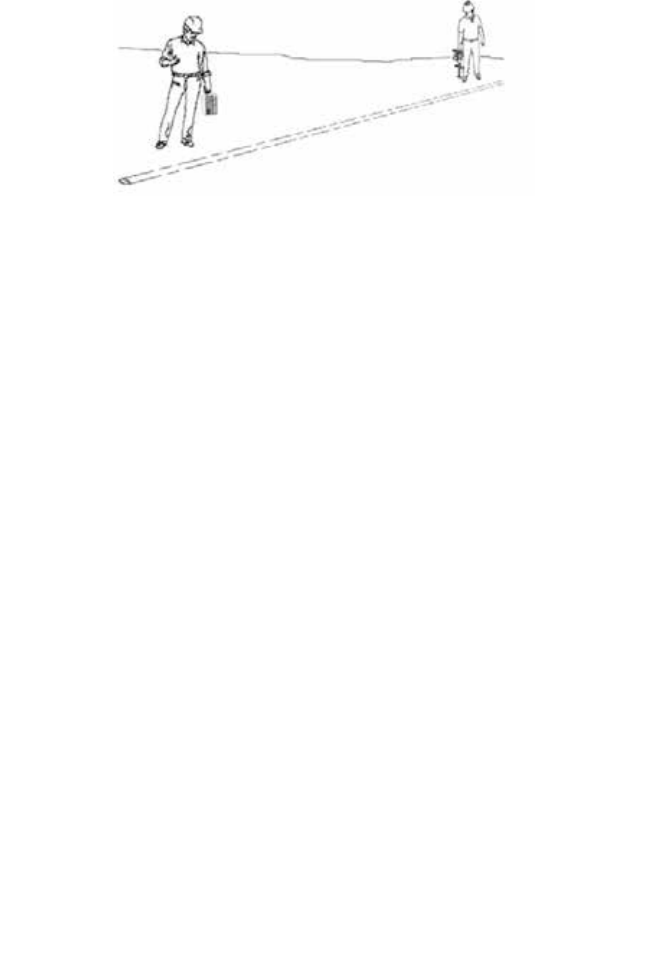
78-9000-0192-2 Rev C 27
E. Two-person Active Induction Mode Sweeps
In two-person active induction mode sweeps, one person holds the transmitter and
the other holds the receiver while walking together in a sweep pattern detecting long
conductors in the ground when crossed by transmitter and receiver positions and
orientation, as shown below:
Transmitter Set-up
• Remove anything plugged into the Output Jack [T-6] (this will place unit in Induction
Mode), select high frequency (200 kHz), or medium frequency (33 kHz or 82 kHz),
and highest output power level.
• Hold the transmitter with the lid facing up and align it with the Induction Direction
arrow label, as shown on the transmitter, with the receiver
Receiver Set-up
• Set the receiver to the same frequency as the transmitter.
• Select the Induction Peak (Ind Pk) mode, and press the Gain [3] (+ or -) key until the
Bar Graph [11] ([10] for 2550) is just visible.
Sweeping
• Sweeping can be done at close distances between the transmitter and receiver.
• For best results, the receiver should be at least 25 feet (7.6 m) away from the
transmitter to begin tracing the target path and have the gain set between 78-84%
when starting the sweep. Attempting to trace the target close to the transmitter may
lead to false indications due to the receiver detecting the large magnetic field radiating
from the transmitter.
• Induction Peak (Ind Pk) mode cancels the air signal coming directly from the
transmitter induction antenna to the receiver. Increasing the sweep distance between
the transmitter and receiver reduces the direct air signal and allows for sensing deeper
conductors and sections of metal pipes. Use Induction Peak (Ind Pk) mode when
sweeping distance between the transmitter and receiver is 25–60 feet (7.6–20 m).
Beyond 60 feet (20 m) you can also use the Trace View (T-view), Special (single)
Peak (Spl Pk) or Directional Peak (Dir Pk) modes.
• Special (single) Peak (Spl Pk) can be used for maximum detection depth and range
(needed for deep conductors and metal pipes), but would require increased sweep
distance separation between the transmitter and receiver.


















